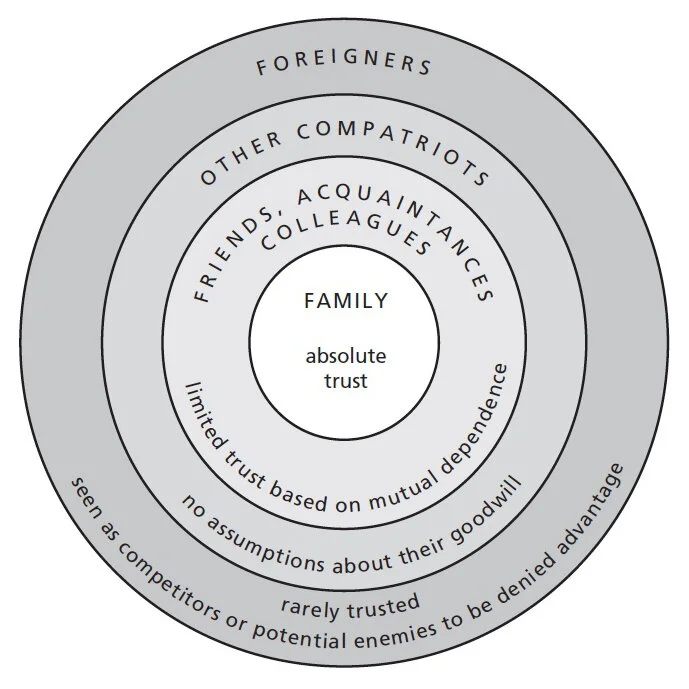South Korea
Seoul, South Korea
Cultural Investigation: South Korea
Geography
South Korea, officially known as the Republic of Korea (ROK), is located in eastern Asia. It is located on the southern part of the Korean Peninsula between the Sea of Japan in the east, the Yellow Sea in the west, and the Korean Strait in the south. The country is bordered by North Korea in the north and shares maritime borders with China and Japan.
The country is home to a population of 50.8 million (2016) and the largest city and capital is Seoul. Busan is the second largest city and a major port.
Language
The official language is Korean, spoken by 70 million people and 5 million overseas Koreans. Their writing system is Hangul, a Korean alphabet invented by King Sejong the Great in 1443 consisting of 10 vowels and 14 consonants. It is often said that the Korean alphabet is so straightforward that any non-Korean speaker could look at the alphabet and learn to read in an afternoon.
This relatively young alphabet and resilient writing system survived a 35 year occupation where the Japanese attempted to destroy all things Korean. Hangul has helped define the identity of those who call themselves han-gu-gins (한국인; Koreans).
Religion
The religious breakdown is 46% Buddhism, 39% Protestantism, 13% Catholicism, 1% Confucianism, and 1% Cheondogyo (the Religion of Heavenly Way) and others.
History & Politics
After World War II, the Korean Peninsula was divided between a communist-style government in the north and a republic-style government in the south. Following the Korean War in 1953, US and UN forces intervened to defend South Korea from attacks by North Korea (supported by the Chinese). An armistice was signed to officially split North and South Korea along on the 18th parallel, a demilitarized zone. As a result, South Korea grew rapidly and their per capita income rose 13 times higher than North Korea. In 2000, the first north-south summit took place between President Kim Dae-jung and Kim Chong-il.
South Korea has transformed from an agrarian society to a world industrial leader. Progress is being made in sectors of education, science and technology. South Korea is the world’s 5th largest exporter and 8th largest importer. They are also renowned for their influential pop culture, especially K-pop. BTS, also known as Bangtan Boys, is a seven-member boy band that has gained massive global popularity. The increase in global popularity of South Korean Culture is a phenomenon referred to as the Korean Wave.
The South Korean political system is a presidential representative democratic republic. Both the government and the National Assembly hold legislative power. The head of state is the President and the head of government is the Prime Minister.
Busan, South Korea
Cultural Values & Worldview
Buddhism and Confucianism have influenced South Korean society and culture. This way of thinking emphasizes the importance of healthy human interactions and defines hierarchical roles (natural inequality) which is accepted and respected. Social hierarchy is indicated by one’s position, occupation, education, and age. Age is especially important; South Koreans give respect to anyone older than them by deferring to their opinion, waiting for their input and lowering their gaze. Although these traditional values are at the root of society, more and more younger generations of Koreans are changing, becoming more Westernized and individualistic.
Korean age is calculated slightly differently compared to other countries (international age). Everyone is considered a year old when they are born; Koreans consider a year in the womb as counting toward their age. The Korean age will change on New Year’s day, January 1st. However, they still celebrate their actual birthdays.
The concept of face, chaemyoun, is embedded in Korean culture. This refers to reputation, influence, dignity and honor. It is important to protect self-worth and perception among peers.
Another South Korean concept is hahn - the collective feeling of frustration built up in the Korean psyche from much suffering. This notion has contributed to the rise in Korean nationalism, work ethic and focus on prosperity.
Communication Styles & Building Trust
South Korea is a high context culture according to Edward T. Hall’s framework. This means they tend to be more indirect and formal in their communication styles. Additionally, they highly value interpersonal relationships. South Korea is a collectivist society, preferring group harmony and consensus over individual achievement. In fact, South Korea scores a very low score of 18 on their Individualism dimension (Hofstede Insights) meaning they view their society in terms of “we” instead of “I” and have a very close long-term commitment to their member ‘group’ (e.g. family, extended family, or extended relationships, etc.)
According to the Motivating People and Building Trust reading, South Korea is considered a low-trust society. Low-trust cultures completely trust those they know best, such as family and lifetime friends, and have limited trust of outsiders. Below is an illustration of a low-trust model:
Fig 9.2 Low Trust - Lewis, R. D. (2005) Motivating People and Building Trust
High context cultures need to establish an interpersonal relationship in order to build trust. In contrast, low context cultures tend to build trust based on proven ability and over time they become more comfortable and confident with doing business. Collectivist cultures show more reciprocal trust towards people they have previously encountered and established a relationship with. This is known as Assurance Based Trust.
“In highly reactive cultures such as Japan, China and Korea, trust is gained through respectful behavior, protecting the other’s face, reciprocating favors and exhibiting predictable courtesies. Westerners can score points and earn trust through mirroring this behavior. Compassion and closeness are not required; flattery and reference to shared experience or common friends are.” (Lewis, 2005)
In the reading, Motivating People and Building Trust, they also recommend the following trust-building strategies:
Set clear, transparent aims and goals
Prepare clear instructions
Communicate with them effectively
Insist on an information-sharing policy
Provide practical, user-friendly tools
Set up time-efficient processes
Recognize contributions
Back up the “team”
Act on the team’s recommendations
Work toward transparency
Business Culture
Leadership Styles - Korean business culture is hierarchical and management is paternalistic - status is determined by age, position and connections. Business and work can be rather competitive. Coming in second and compromises can be viewed as a defeat. South Koreans are very relationship oriented. Sometimes an introduction by a third-party can be effective method for establishing rapport early on and may lead to developing mutual trust.
Another uniquely Korean concept is chaebols, very large business conglomerates controlled by a single family. In 2011, the ten largest chaebol shares of South Korea’s GDP was 76.5%. The word chaebol is a combination of the Korean words chae (wealth) and bol (clan or clique). They are large, family-run business conglomerates such as Samsung, Hyundai and LG. These chaebols have played a role in growing South Korea's economy and influencing politics. Today, Korean political officials are passing reforms and policy to break the dominance of these chaebols in order to crack down on corruption, change corporate management and ownership structures, increase transparency for management and financial reporting, tougher antitrust laws, a ban on shareholding among subsidiaries, and giving a greater voice to minority shareholders.
Negotiation Styles - “Different cultures practice different negotiation styles.” (Mehra, 2014) South Koreans communicate indirectly, so it is advisable to play close attention to subtle cues in their responses, such as hesitation. For the sake of saving face, Koreans will seldom give a flat negative response, even if they disagree with it. “Indeed, the cause of unsuccessful negotiations is often due to differences in cultures rather than political, economic, or legal issues." (Mehra, 2014)
In the reading, Communication Skills in International Business Negotiations, the biggest takeaway was the recommendation that "the ideal negotiator should move away from stereotyping (e.g. Chinese are tough negotiators, Arabs welcome interruptions, Americans are direct, Germans are time bound) and labeling (task focused; people focused) and focus on individuals since deals are conducted by individuals." (Mehra, 121). However, it is still helpful to have generalizations, but it is best to be flexible and adapt to the situation.
Conflict Resolution - Since South Korea is a high context and collectivist culture, there is a strong sense of 'face' and an emphasis on harmony. Conflict is seen as a sign of social failure and is therefore to be avoided. According to Hammer’s Four Conflict Resolution Styles, South Korea would follow an Accommodation Style. This style emphasizes the ambiguity in language in order to ensure a conflict doesn’t get out of control. It is essential to maintain emotional calm and reserve in order to preserve interpersonal harmony.
Resources
Country Comparison. (n.d.). Retrieved September 23, 2020, from https://www.hofstede-insights.com/country-comparison/south-korea/
Kästle, K. (n.d.). South Korea - Country Profile - Nations Online Project. Retrieved September 23, 2020, from https://www.nationsonline.org/oneworld/korea_south.htm
Korean Alphabet: A Brief History of Hangul (한글). (2020, January 15). Retrieved September 23, 2020, from https://whattodoinkorea.com/a-brief-history-of-hangeul/
Lewis, R. D. (2005). Chapter 9 Motivating People and Building Trust. In When cultures collide: Leading across cultures. Boston, MA: Nicholas Brealey Publishing (pp.141-151)
Mehra, P. (2014). Communication Skills in International Business Negotiations in Communication. In Communication beyond boundaries. Retrieved from https://ebookcentral-proquest-com.ezproxy1.lib.asu.edu
Pier. (n.d.). South Korean Culture - Business Culture. Retrieved September 23, 2020, from https://culturalatlas.sbs.com.au/south-korean-culture/south-korean-culture-business-culture
Price, S. (2020, August 07). Korean Age: All About Age in Korea. Retrieved September 23, 2020, from https://www.90daykorean.com/korean-age-all-about-age-in-korea/


